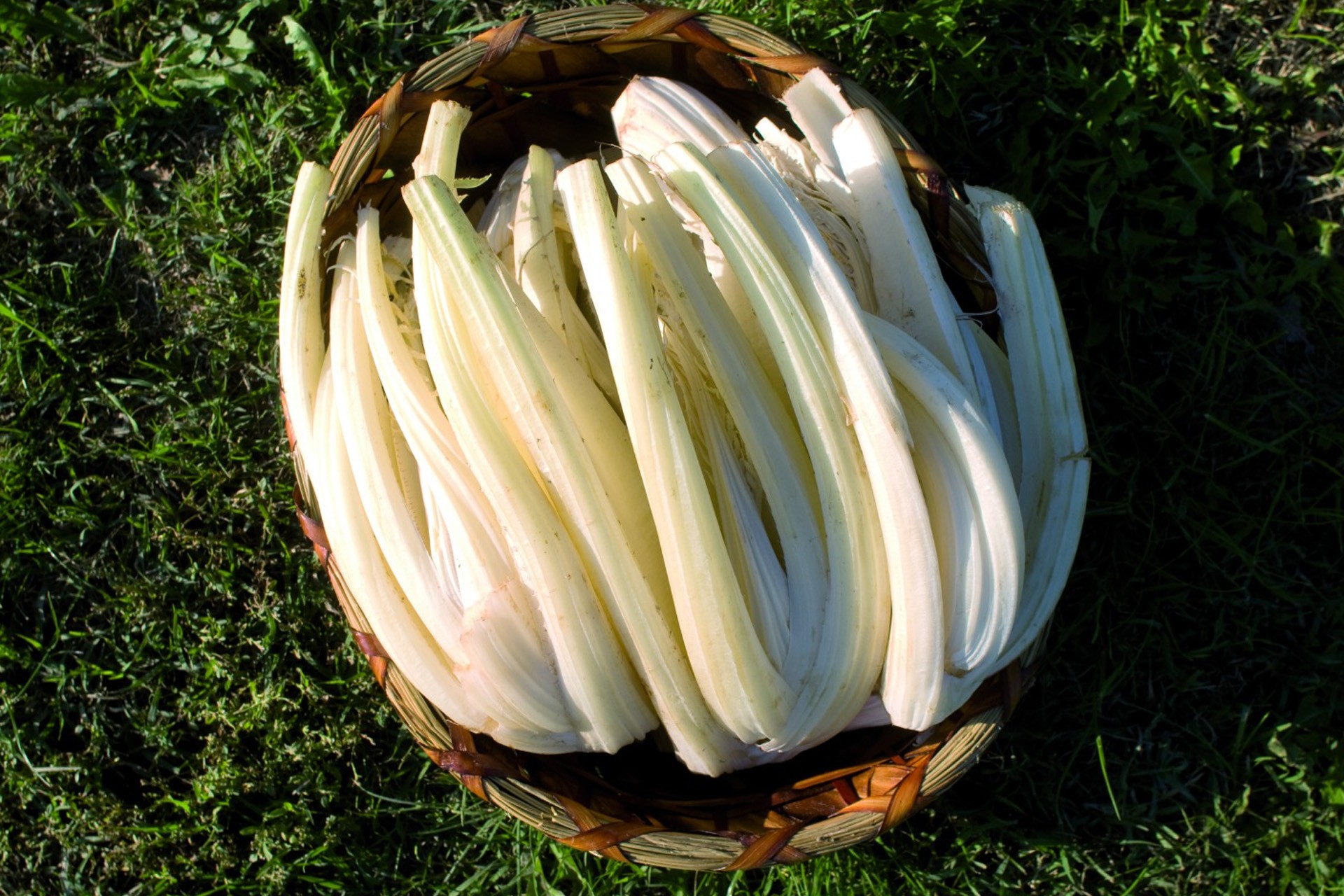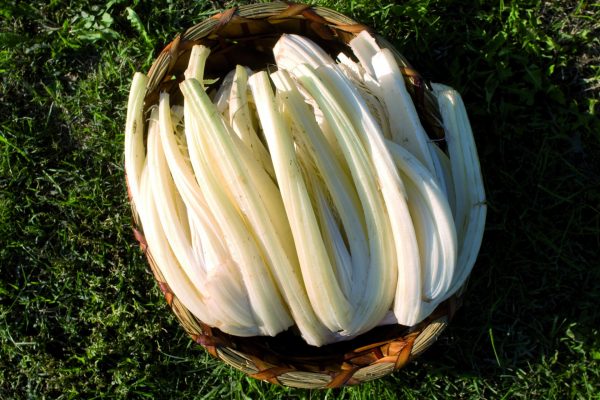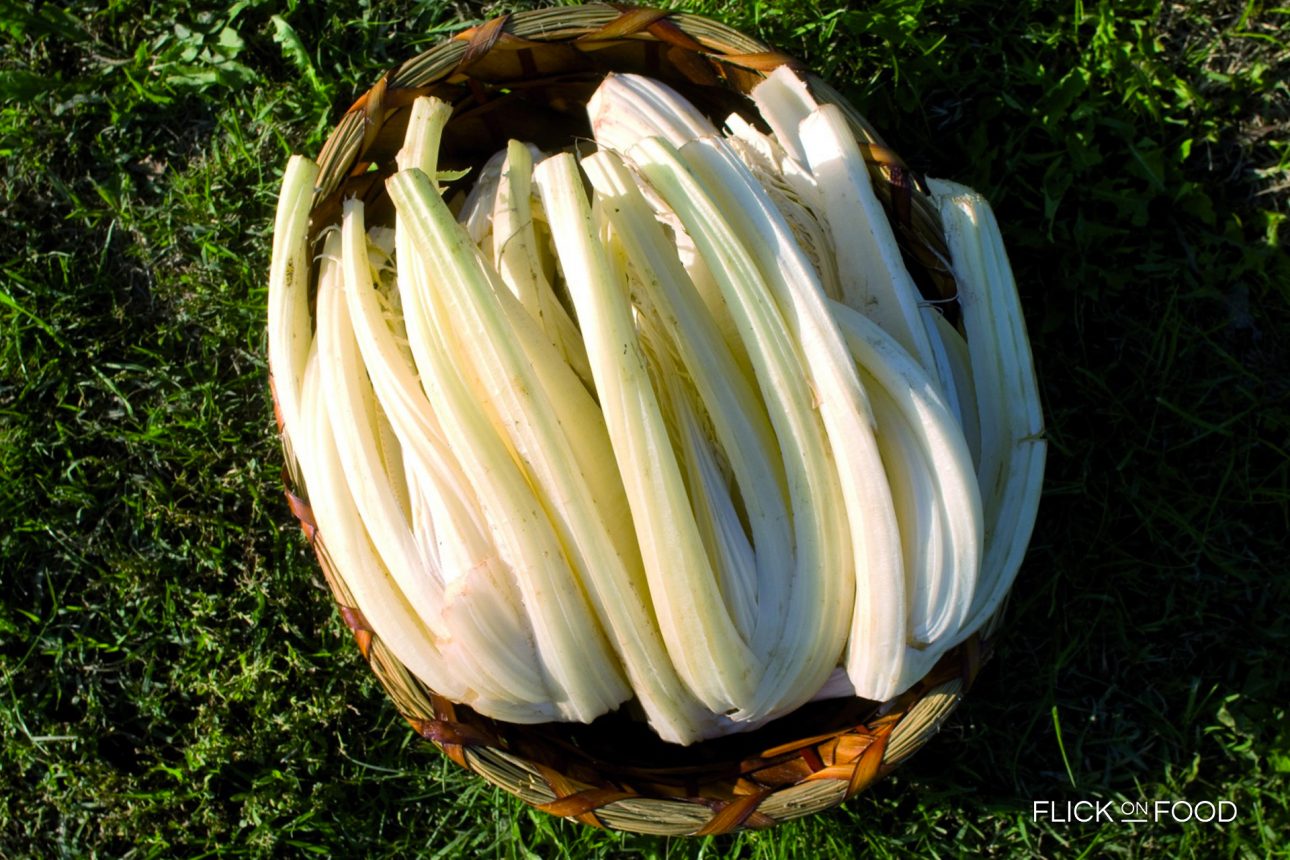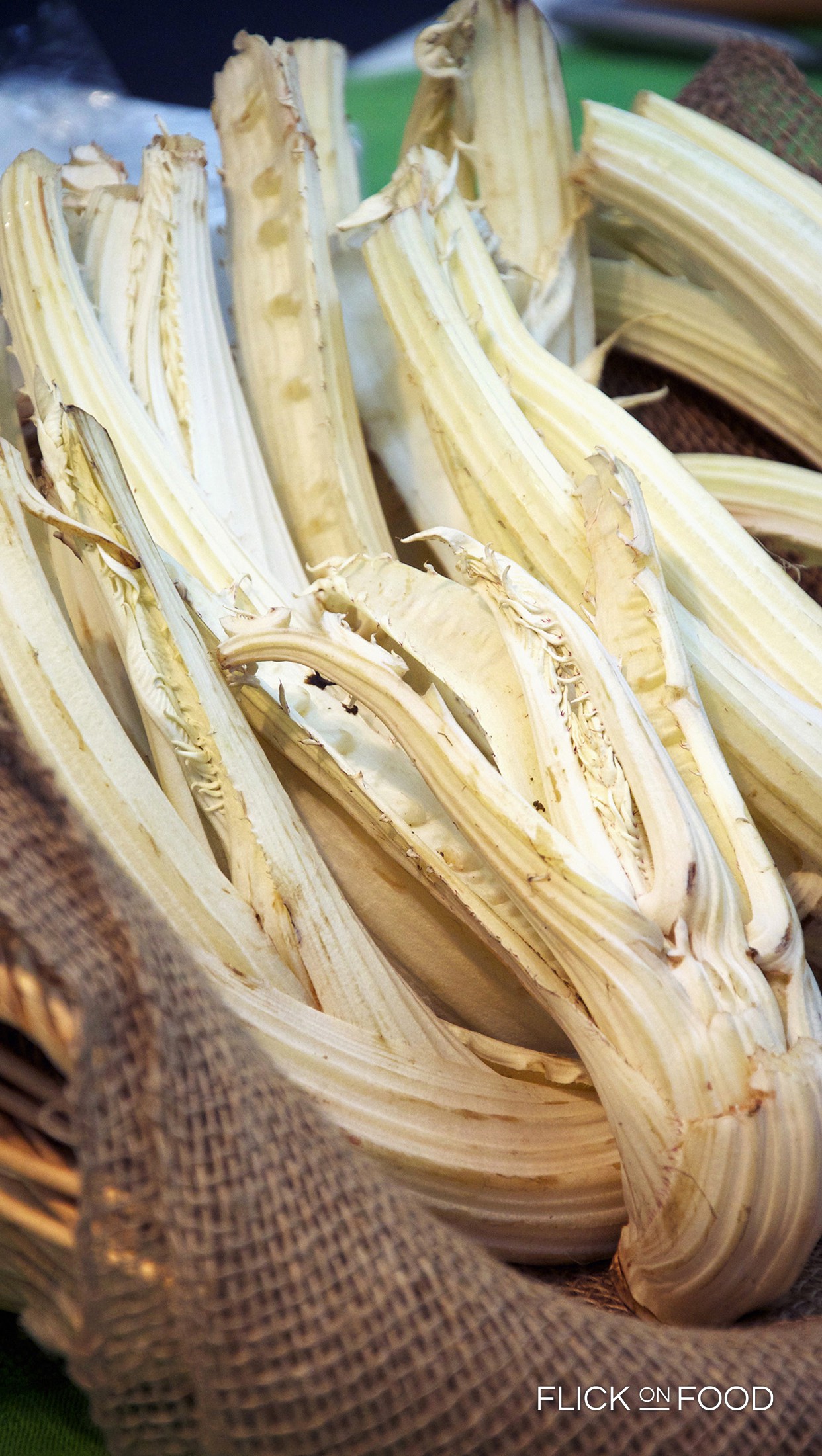
Delicious raw, this is a vital ingredient for a iconic Piemont dish: “bagna cauda”!
Origin
The “hunchback” cardoon of Nizza Monferrato is a rare ingredient, cultivated in the sandy terrain between the towns of Nizza Monferrato, Incisa Scapaccino and Castelnuovo Belbo in Piedmont. Among one of the first products to gain Slowfood status, it seems that the cardoon’s roots can be traced back to Africa, and that it was already well known by the Greeks and Romans. The true hunchback cardoon of Nizza Monferrato is exclusively the variety known as spadone (or “sword”) after the shape of its stalk and leaves. Why “hunchbacked”? This is down to the way it’s grown. Cardoons are planted in May, and once they’re waist high in September, they’re folded over and buried again, with just the tips of their leaves poking above the ground. As the plants seek the sunlight, they curve upwards. In October when they’re dug up again, the ruined parts are discarded, leaving only the heart.
Cookit
The cardoon’s delicate flavor on the palate owes partially to the fact that it stays underground so long that it loses any trace of chlorophyll, becoming white and tender. The Nizza cardoon is great eaten raw with “bagna cauda”, a traditional sauce from Piedmont made with anchovies, garlic and oil. If you’re eating cardoons raw, make sure you wash them thoroughly, removing the strings and soaking them in water with lemon to keep them from going brown. If you’re cooking them, add a few drops of lemon juice to the water while they boil.
Did you know
Cardoon cultivation requires manual labor, and the people who grow them are more than just simple farmers. The plants need to be sowed and harvested by hand, and require expert handling. Producers need to know exactly the right moment to plant them and when to tie up the tall bunches of leaves. It’s a job that’s fading away, but that still reflects know-how and skill today.





